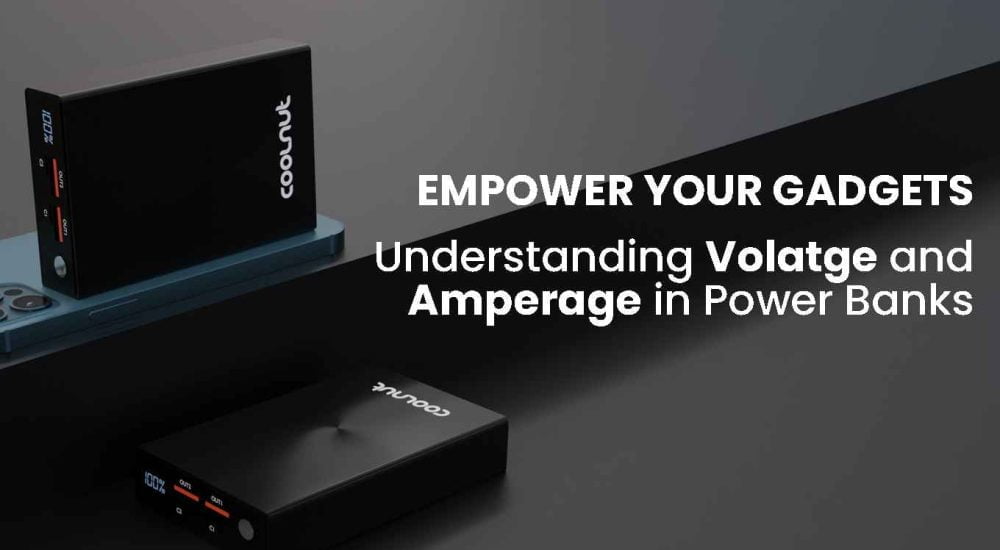
What are you missing out on when buying a power bank?
The demand for Portable Power Banks has grown at a steady speed. There is a high rise in competition among all the power bank brands. It has basically become a necessity for all of us as we all are using smart gadgets. Everyone is buying a portable power bank, but the question arises.
Are we choosing the right power bank that is compatible with our devices?
When buying a power bank, there are several common mistakes that people often make. Avoiding these mistakes will ensure that you get a reliable and efficient power bank that meets your needs.
Having a knowledge of voltage and amperage in power banks is essential for efficiently charging your devices. Also, ensuring the safety of both the power bank and the device you’re charging.

Let’s break it down.
Have you heard of Voltage (Volts- V)?
Voltage is the electrical potential difference between two points in a circuit.
- In context to power banks, understanding battery voltage is important. As it represents the force or pressure of the electrical energy.
- Different devices require different voltage levels to charge properly. For example, most smartphones use a voltage of around 5 volts for charging.
- When selecting a power bank, make sure its output voltage matches or is compatible with your device’s requirements. Using a power bank with the wrong voltage could damage your device or the power bank itself.
What is Amperage (Amperes or Amps- A)?
Amperage, often referred to as current, is the rate of flow of electric charge.
- Importance of amperage in charging a device as it measures how many electrons are passing through a circuit per second.
- Power banks provide a certain amount of current to charge your devices. Common values are 1A (1 amp) or 2.1A (2.1 amps). Some high-capacity power banks can provide even more current.
- Devices with larger battery capacity and faster charging features often require higher amperage. For instance, tablets and some fast-charging smartphones may require 2A or more.
Voltage x Amperage = Wattage
Do you know what is Wattage (Watts – W)?
Wattage is a measure of the total power delivered by a device.
- Watts is calculated by multiplying Voltage (V) by Amperage (A). The formula is = (W = V x A).
- Knowing the wattage can help you understand the charging speed of a power bank. The higher the wattage of a power bank, the faster will a device get charged.
- To ensure compatibility, check whether the power bank’s total wattage is suitable for your device.
What is Milliampere-Hour (mAh) of a power bank?
- Power banks are often rated in milliampere-hours (mAh) or ampere-hours (Ah).
- This represents the capacity of the power bank’s battery.
- A higher mAh rating means the power bank can store more energy and charge your devices multiple times.
Safety Considerations:
- Using a power bank with incorrect voltage or amperage settings can potentially damage your device or the power bank itself.
- Many modern power banks have built-in safety features to prevent overcharging, over-discharging, and short circuits. However, it’s still important to use premium quality, reputed brand power banks.
In summary, understanding voltage and amperage in power banks is crucial for selecting the right power bank for your devices. To ensure safe and efficient charging always refer to your device’s specifications and compare it with the power bank’s output ratings.
